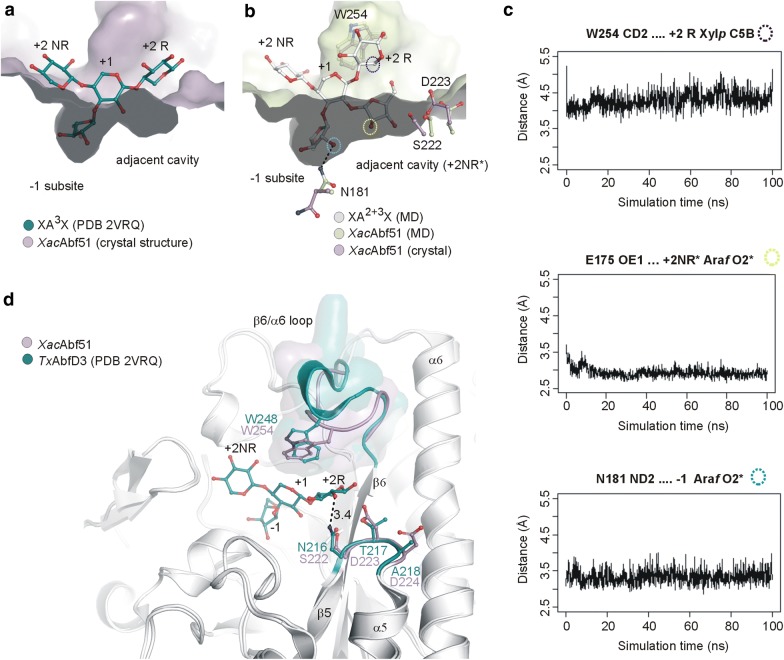Fig. 6.
A cavity adjacent to − 1 subsite accommodates the second decoration of di-substituted AXOS. a Structural superposition of XacAbf51 structure (violet surface) with TxAbfD3 structure in complex with 32-α-l-arabinofuranosyl-xylotriose (XA3X; blue C atoms). Subsites are labeled according to the nomenclature used by McKee and coworkers [14]. NR non-reducing end, R reducing end. b Comparison between XacAbf51 crystal structure and the modeled XacAbf51–XA2+3X complex after 100 ns of molecular dynamics simulation. According to this simulation, the xylan backbone bends at the β-1,4 linkage involving the reducing end of substrate to better accommodate the di-substitution in the cavity adjacent to the − 1 subsite of XacAbf51. c Selected inter-atomic distances between enzyme and substrate indicate favorable interactions over the simulation. Colored circles refer to the selected substrate atoms highlighted in b (open circles). d Structural comparison of XacAbf51 and TxAbfD3 crystal structures highlighting the divergent loops β5–α5 and β6–α6 that delineates the +1 and +2R subsites. The substrate XA3X bound to TxAbfD3, as well as the different positioning of W254 compared to W248 and the side chains of SDD and NTA motifs are shown in sticks and color-coded according to the respective structure. Note the hydrogen bond between N216 and the O2 of +2R Xylp residue that is absent in XacAbf51

